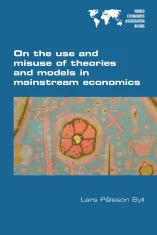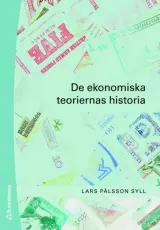How true is Friedman’s permanent income hypothesis?
28 Jul, 2016 at 10:39 | Posted in Economics | 2 Comments Noah Smith has an article up on Bloomberg View on Milton Friedman’s permanent income hypothesis (PIH). Noah argues that almost all modern macroeconomic theories are based on PIH, especially used in formulating the consumption Euler equations that make up a vital part of ‘modern’ New Classical and New Keynesian macro models.
Noah Smith has an article up on Bloomberg View on Milton Friedman’s permanent income hypothesis (PIH). Noah argues that almost all modern macroeconomic theories are based on PIH, especially used in formulating the consumption Euler equations that make up a vital part of ‘modern’ New Classical and New Keynesian macro models.
So, what’s the problem? Well, only that PIH according to Smith is ‘most certainly wrong.’
Chris Dillow has commented on Noah’s PIH critique, arguing that although Noah is right
he overstates the newness of the evidence against the PIH. In fact, we’ve known it was flawed ever since the early 80s. He also overstates the PIH’s intellectual hegemony. The standard UK undergraduate textbook says:
“One strong prediction of the simple PIH model … is that changes in income that are predictable from past information should have no effect on current consumption. But there is by now a considerable body of work on aggregate consumption data that suggests this is wrong…This is an important result for economic policy because it suggests that changes in income as a result, say, of tax changes can have a marked effect on consumption and hence on economic activity.” (Carlin and Soskice, Macroeconomics: Imperfections, Institutions and Policies, p 221-22)”
Dillow then goes on arguing that PIH is not always wrong, that it is useful, and that it is basically all about ‘context’ and that this reinforces what Dani Rodrik has written in Economics Rules (p 5-6) :
Different social settings require different models. Economists are unlikely ever to uncover universal, general-purpose models. But in part because economists take the natural sciences as their example, they have a tendency to misuse models. They are prone to mistake a model for the model, relevant and applicable under all conditions. Economists must overcome this temptation.
Well yours truly thinks that on this issue both Noah and Chris are not critical enough.
Let me elaborate, and start with Carlin & Soskice and then move over to Rodrik and his smorgasbord view on economic models.
Wendy Carlin’s and David Soskice‘s macroeonomics textbook Macroeconomics: Institutions, Instability, and the Financial System (Oxford University Press 2015) builds more than most other intermediate macroeconomics textbooks on supplying the student with a ‘systematic way of thinking through problems’ with the help of formal-mathematical models.
They explicitly adapt a ‘New Keynesian’ framework including price rigidities and adding a financial system to the usual neoclassical macroeconomic set-up. But although I find things like the latter amendment an improvement, it’s definitely more difficult to swallow their methodological stance, and especially their non-problematized acceptance of the need for macroeconomic microfoundations.
From the first page of the book they start to elaborate their preferred 3-equations ‘New Keynesian’ macromodel. And after twenty-two pages they have already come to specifying the demand side with the help of the Permanent Income Hypothesis and its Euler equations.
But if people — not the representative agent — at least sometimes can’t help being off their labour supply curve — as in the real world — then what are these hordes of Euler equations that you find ad nauseam in these ‘New Keynesian’ macromodels gonna help us?
My doubts regarding macro economic modelers’ obsession with Euler equations is basically that, as with so many other assumptions in ‘modern’ macroeconomics, Euler equations, and the PIH that they build on, don’t fit reality.
In the standard neoclassical consumption model — underpinning Carlin’s and Soskice’s microfounded macroeconomic modeling — people are basically portrayed as treating time as a dichotomous phenomenon – today and the future — when contemplating making decisions and acting. How much should one consume today and how much in the future? The Euler equation used implies that the representative agent (consumer) is indifferent between consuming one more unit today or instead consuming it tomorrow. Further, in the Euler equation we only have one interest rate, equated to the money market rate as set by the central bank. The crux is, however, that — given almost any specification of the utility function – the two rates are actually often found to be strongly negatively correlated in the empirical literature!
From a methodological pespective yours truly has to conclude that Carlin’s and Soskice’s microfounded macroeconomic model is a rather unimpressive attempt at legitimizing using fictitious idealizations — such as PIH and Euler equations — for reasons more to do with model tractability than with a genuine interest of understanding and explaining features of real economies.
Re Dani Rodrik‘s Economics Rules, there sure is much in the book I like and appreciate.But there is also a very disturbing apologetic tendency in the book to blame all of the shortcomings on the economists and depicting economics itself as a problem-free smorgasbord collection of models. If you just choose the appropriate model from the immense and varied smorgasbord there’s no problem. It is as if all problems in economics were conjured away if only we could make the proper model selection.
Underlying Rodrik and other mainstream economists views on models is a picturing of models as some kind of experiments. I’ve run into that view many times over the years when having discussions with mainstream economists on their ‘thought experimental’ obsession — and I still think it’s too vague and elusive to be helpful. Just repeating the view doesn’t provide the slightest reasont to believe it.
Limiting model assumptions in economic science always have to be closely examined since if we are going to be able to show that the mechanisms or causes that we isolate and handle in our models are stable in the sense that they do not change when we ‘export’ them to our ‘target systems,’ we have to be able to show that they do not only hold under ceteris paribus conditions and hence only are of limited value to our understanding, explanations or predictions of real economic systems.
Mainstream economists usually do not want to get hung up on the assumptions that their models build on. But it is still an undeniable fact that theoretical models building on piles of known to be false assumptions — such as PIH and the Euler equations that build on it — in no way even get close to being scientific explanations. On the contrary. They are untestable and hence totally worthless from the point of view of scientific relevance.
Conclusion: mainstream macroeconomics, building on the standard neoclassical consumption model with its Permanent Income Hypothesis and Euler equations, has to be replaced with something else. Preferably with something that is both real and relevant, and not only chosen for reasons of mathematical tractability.
2 Comments
Sorry, the comment form is closed at this time.
Blog at WordPress.com.
Entries and Comments feeds.








The unrecognised prize in the study of the economy is finding out what the economy is like. The path to the prize is not a path to accumulating an unlimited smorgasbord weighed down with a superabundance of models from which we might artfully choose, guided by solipsistic intuition.
.
There is only one economy, one reality, and we must work to understand by process of elimination: The actual economy is not like this. Not like that.
.
We need to taste that smorgasbord and start throwing unsatisfactory dishes away. When we have a nearly empty board of analysis, we might be within sight of knowledge worth having.
.
Building up our understanding of factual reality is never going to be embodied in a nomological machine with axioms for a father and mother. The world is neither a theorem nor a system of theorems. What we want to embody our factual understanding is something other than a geometry, something more like a map.
.
A map is an abstract representation of reality, but no one would be satisfied with a map that was not similar in well-defined and methodical ways to the reality it maps. We should be able to find our way about the place mapped, guided by the map — that is the test of the map.
.
In analysis, we try to isolate factors, but in synthesis, we seek to find coincidence. In analysis, we seek to generalize from a disembodied logic, reasoning from weightless parameters, but on a map, all is measured, precise, definite and specific. Because that is the only relevant sense for the claim the economy is like this, has this feature, that institution.
Comment by Bruce Wilder— 29 Jul, 2016 #
Regarding Rodrik’s range of models from which to choose, the crucial distinction is between science and art or lore. Science specifies criteria technically and their application operationally. Art and lore are a mixture of feeling, intuition, experience and luck.
If economists want to claim that economics is a science with a range of models, then some rigorous decision criteria need to be elaborated and justified foundationally. Instead of what is your model, the foundational question is what are the criteria for choosing it over others?
If the assumptions are overly restrictive or simplistic, then the criteria cannot be based on fitness. If an instrumental criterion is selected based on outcomes, several issues arise.
First, how can a causal explanation be based on assumptions that are unrealistic?
Secondly, anything follows from false premises. Why is an “explanation” based on premises so unrealistic as to be clearly false an explanation at all?
Thirdly, what are the criteria for choosing the best explanation when many explanations are possible.
Fourthly, is the model a general case explanation or a special case explanation. If the former, it must be falsifiable without qualification based on circumstances. If a special case explanation, what are the criteria for deciding when that case is operative.
These are just some of the logical questions without mentioning the historical, institutional and behavioral ones, or cognitive bias.
To an outsider trained in philosophy, it looks like the conventional economics profession is short on foundational studies and long on cognitive bias. Amateurish.
From John Kenneth Galbraith at Wikiquote.org:
• “Faced with the choice between changing one’s mind and proving that there is no need to do so, almost everyone gets busy on the proof.” — Economics, Peace and Laughter (1971), p. 50
• “In economics, hope and faith coexist with great scientific pretension and also a deep desire for respectability.” — The New York Times Magazine (1970-06-07)
• “It is my guiding confession that I believe the greatest error in economics is in seeing the economy as a stable, immutable structure.” — A Journey Through Economic Time (1994)
Comment by Tom Hickey— 28 Jul, 2016 #